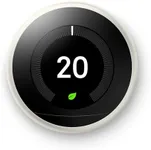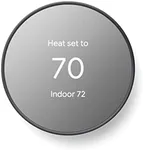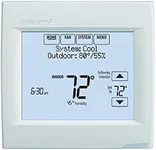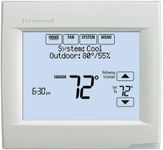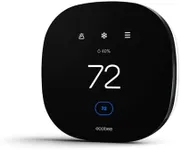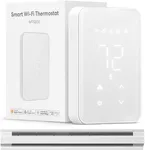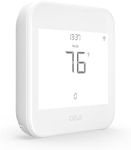Buying Guide for the Best Multi Stage Thermostat
Choosing the right multi-stage thermostat can significantly improve the comfort and efficiency of your heating and cooling system. A multi-stage thermostat is designed to control systems with multiple heating or cooling stages, which can provide more precise temperature control and energy savings. To find the best fit for your needs, it's important to understand the key specifications and how they relate to your specific requirements.CompatibilityCompatibility refers to whether the thermostat can work with your existing HVAC system. This is crucial because not all thermostats are compatible with all systems. Multi-stage thermostats are designed for systems with more than one stage of heating or cooling, such as heat pumps or furnaces with multiple burners. To determine compatibility, check your HVAC system's manual or consult with a professional. If you have a complex system, ensure the thermostat supports the number of stages your system has.
ProgrammabilityProgrammability allows you to set different temperatures for different times of the day or week. This feature is important for optimizing comfort and energy savings. Programmable thermostats can be divided into non-programmable, 5-2 day, 5-1-1 day, and 7-day models. Non-programmable thermostats are simple but lack flexibility. 5-2 day models let you set one schedule for weekdays and another for weekends. 5-1-1 day models offer separate schedules for weekdays, Saturday, and Sunday. 7-day models provide the most flexibility, allowing different schedules for each day of the week. Choose based on your daily routine and how much control you want over your heating and cooling.
Smart FeaturesSmart features include Wi-Fi connectivity, voice control, and learning capabilities. These features are important for convenience and advanced energy management. Wi-Fi connectivity allows you to control the thermostat remotely via a smartphone app. Voice control lets you adjust settings using voice commands through smart home devices like Amazon Alexa or Google Assistant. Learning capabilities enable the thermostat to learn your schedule and preferences over time, automatically adjusting settings for optimal comfort and efficiency. If you value convenience and tech integration, look for a thermostat with these smart features.
User InterfaceThe user interface refers to how you interact with the thermostat, including the display and controls. A good user interface is important for ease of use and accessibility. Thermostats can have simple digital displays, touchscreens, or even color displays. Some models offer intuitive menus and easy-to-read screens, while others might be more basic. Consider how comfortable you are with technology and how much time you want to spend adjusting settings. If you prefer simplicity, a basic digital display might be sufficient. If you want more control and information at a glance, a touchscreen or color display could be a better choice.
Energy ReportsEnergy reports provide insights into your energy usage and can help you identify ways to save on heating and cooling costs. This feature is important for those who are conscious about energy consumption and want to optimize their system's efficiency. Some thermostats offer detailed reports and tips on how to reduce energy usage. If you are interested in tracking and improving your energy efficiency, look for a thermostat that provides comprehensive energy reports.
InstallationInstallation refers to the process of setting up the thermostat in your home. This is important because a complicated installation can be frustrating and may require professional help. Some thermostats are designed for easy DIY installation, with clear instructions and online tutorials. Others might be more complex and require wiring knowledge or professional installation. Consider your comfort level with DIY projects and whether you are willing to hire a professional. If you prefer a hassle-free setup, look for a thermostat with straightforward installation instructions.
